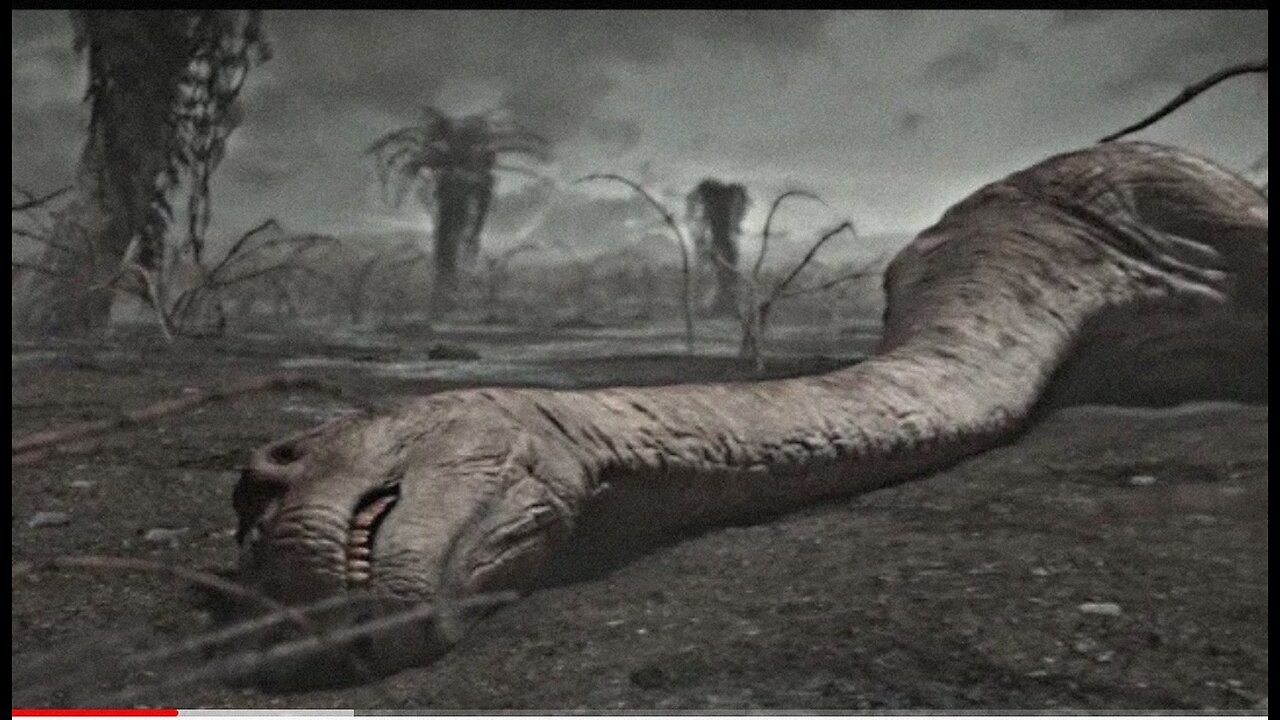Premium Only Content

Extinct dinosaurs!What was the world like?What was the world like without dinosaurs?
65 million years ago, an event occurred that even an elementary school child already knows about.
A meteorite collided with planet earth, causing all dinosaurs to disappear at once.
But did that really happen?
Was there any possibility that something more complex and more curious had happened?
How did the planet look after 1 minute of the big collision?
How about 1 year, or maybe 10 million years later?
Did a cataclysm really happen?
The phenomenon known by all as ¨Extinction of dinosaurs¨, is called by scientists ¨Cretaceous-Paleogene Extinction¨.
This event not only ended the Cretaceous, but also ended a period formed by 3 eras, which lasted about 200 million years called the Mesozoic.
And so the curtains of a new era opened, the era that we currently live in called the Cenozoic.
It wasn't just dinosaurs that went extinct.
Large marine reptiles and even molluscs such as the ammonoid, an ancient creature that had existed since the Devonian, became completely extinct.
Virtually the entire chain of the ecosystem was destroyed.
But still, the Cretaceous-Paleogene extinction was not the greatest extinction in history.
In the Permian, where 96% of marine life and 73% of land vertebrates went extinct, or long before that, in the Ordovician mass extinction. Both were immensely larger.
And billions of years after that, there was still a great cataclysm, where the concentration of oxygen in the atmosphere increased dramatically, and the composition of the biosphere turned upside down.
There were other extinctions on a worldwide scale, such as the Francevillian biota or the Hainan biota, where a group of living beings disappeared completely without leaving descendants.
To understand the scale of this, imagine that all the animals and plants in the world disappeared, and then new life began to be born where practically nothing else existed.
But then why did the Cretaceous-Paleogene extinction become the most famous?
This is due to the fact that we know much more about it than about other extinctions that have occurred so far.
The impact that changed fate
On land the dinosaurs, in the sea Mosasaurus and Plesiosauria, and in the sky the Pterosaurs.
At the end of the Cretaceous, reptiles ruled the world.
In terms of evolution, primitive mammals and birds were already much further ahead. But even then they were not able to occupy a dominant position.
But as soon as that asteroid, or comet, fell to Earth, everything changed.
Even today the books tell us that this happened 65 million years ago. But recent studies show that the big collision had already occurred about 1 million years earlier.
The size of this celestial body reached 10 kilometers in diameter, and it fell on the Yucatán Peninsula, in present-day Mexican territory.
The crash site is known by researchers as Chicxulub Crater.
The Shiva crater, located in the ocean near the west coast of India, has been suggested to be generated by a giant fragment, which broke off from the asteroid before the impact.
If in the same way, the main body of the asteroid had fallen into the sea, it would certainly have generated an unprecedented giant tsunami.
And that would undoubtedly have done serious damage to the biosphere. But still, it wouldn't be catastrophic.
However, unfortunately for the dinosaurs, the main body fell to earth.
At the time of the fall, there was a gigantic explosion.
After an immense amount of rocks were launched into space, they fell back to earth becoming a rain of fire, and covering the entire planet in flames.
Revenge of the Synapsids
How long did this endless night and this long winter last?
Despite the fact that scientists still cannot answer this question, it is believed that it lasted for a few years.
Once the dust in the air had settled, the long winter finally came to an end, and then came spring.
But when the sun regained its glow in the sky, an ominous sight stretched across the land.
Try to imagine. Dead forests everywhere.
And the carcasses of the giant animals lying around.
The desolate and lifeless sea carried the carcasses of shells and sea creatures to the shore, forming a mountain of bones.
The planet became a giant communal graveyard, where herbivores and carnivores, once enemies, now rested together.
What being could survive such a situation?
Firstly, it is quite clear that they were small animals that fed on corpses, lichens and small shoots.
In the case of plants, the one that best adapted was the one that survived the years of winter, and in the long-awaited spring, had seeds or spores capable of germinating again.
The fact that the soil was extremely fertile also helped.
Imagine how much humus covered the earth at that time
-
 LIVE
LIVE
Right Side Broadcasting Network
9 days agoLIVE: TPUSA's America Fest Conference: Day Three - 12/21/24
5,756 watching -
 12:19
12:19
Tundra Tactical
5 hours ago $0.19 earnedDaniel Penny Beats Charges in NYC Subway Killing
7.39K3 -
 29:53
29:53
MYLUNCHBREAK CHANNEL PAGE
1 day agoUnder The Necropolis - Pt 1
67.3K42 -
 2:00:10
2:00:10
Bare Knuckle Fighting Championship
3 days agoCountdown to BKFC on DAZN HOLLYWOOD & FREE LIVE FIGHTS!
32.1K2 -
 2:53:01
2:53:01
Jewels Jones Live ®
1 day agoA MAGA-NIFICENT YEAR | A Political Rendezvous - Ep. 103
55.7K20 -
 29:54
29:54
Michael Franzese
9 hours agoCan Trump accomplish everything he promised? Piers Morgan Article Breakdown
77.6K45 -
 2:08:19
2:08:19
Tactical Advisor
13 hours agoThe Vault Room Podcast 006 | Farwell 2024 New Plans for 2025
159K11 -
 34:12
34:12
inspirePlay
1 day ago $4.66 earned🏆 The Grid Championship 2024 – Cass Meyer vs. Kelly Rudney | Epic Battle for Long Drive Glory!
65.6K8 -
 17:50
17:50
BlackDiamondGunsandGear
10 hours ago $0.24 earnedTeach Me How to Build an AR-15
41.3K4 -
 9:11
9:11
Space Ice
1 day agoFatman - Greatest Santa Claus Fighting Hitmen Movie Of Mel Gibson's Career - Best Movie Ever
103K45